The Mjolnir, also known as the Hammer of Thor, is a powerful symbol in Norse mythology. Mjolnir has a rich history and cultural significance and continues to be a popular modernized symbol. It is associated with Thor and is said to possess the power to level mountains and shatter the earth.
What Is The Mjolnir Symbol?
The Mjolnir symbol represents the legendary hammer wielded by Thor, the Norse god of thunder. It is a highly recognizable symbol in Norse mythology and has become popular in modern times. It is often used as a symbol of strength and power.
One of the unique features of the Mjolnir symbol is its unusual shape. While most hammers have a long handle with a relatively small head, the Mjolnir symbol has a short handle with a large, flat head.
This unusual shape is believed to represent Thor’s power and strength. The large head of the hammer could deliver a powerful blow. The short handle was due to a manufacturing error, but it gave the symbol its uniqueness.
Additionally, the short handle of the Mjolnir may also be a symbol of Thor’s quick and agile movements, as he was known for his speed and agility in battle.
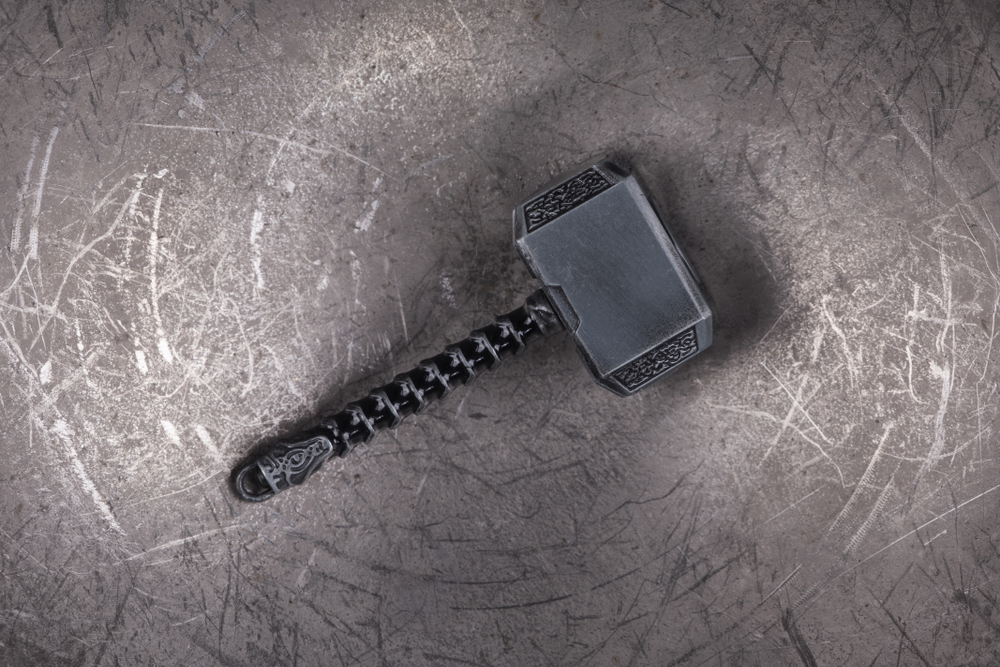
The Origin Of Mjolnir
Like other Norse signs, the roots of the Mjolnir symbol can be traced to the work of Snorri Sturluson Prose Edda in the 13th and 14th centuries. These collections of Norse myths and legends also tell the story of Mjolnir’s creation.
Thor’s hammer was created in the dwarven realm of Svartalfheim, according to the Skáldskaparmál story in the Prose Edda. Surprisingly, its creation was ordered by Thor’s uncle, Loki, the god of mischief.

The history
Earlier in the story, Loki had cut off Thor’s wife Sif’s golden hair. Thor, enraged, threatened Loki with death in retaliation. Still, the god of mischief promised to make things right by going into Svartalfheim and asking the dwarves to fashion a new head of hair for Sif.
Thor let Loki go, and once in Svartalfheim, Loki enlisted the help of the Sons of Ivaldi dwarves to complete this task. The dwarves created a new head of hair for Sif and two other marvels – the fastest ship Skidblandir and the deadliest spear, Gungnir.
Even though his task had been completed, Loki did not immediately leave the dwarven realm. Loki, the god of mischief, decides to play a trick on two other dwarves, Sindri and Brokkr.
He mocked them for being unable to create three other treasures as perfect as those made by Ivaldi’s sons. The two boastful dwarves immediately accepted the wager and demanded Loki’s head if they won. Loki also agreed, and the dwarves started working.
First, they created Gullinbursti, a golden boar that could run faster than any horse on air and water. They could even emit light in the dark. The two dwarves then fashioned Draupnir, a golden ring within which eight other golden rings of the same weight appeared every ninth night.
Developing Mjolnir
Finally, the dwarves began working on Mjolnir. As he did not want the hammer to succeed, Loki attempted to destroy the hammer’s layout by camouflaging himself as a fly and biting Brokkr on the eyelids while the dwarf was doing the work.
Loki’s mischief functioned to some extent. Because of his distractions, the dwarf created Mjolnir’s handle so short rather than the traditional long handle of two-handed battle hammers. As Thor was more than capable of wielding Mjolnir with one hand, Mjolnir became the thunder god’s signature weapon.
In the end, Loki returns to Asgard with his life, Sif’s new hair, and the other five marvels. He bestowed Gungnir and Draupnir upon Odin, Skidbladnir, Gullinbursti upon Freyr, Sif’s new hair, and Mjolnir upon Thor.
What is written on Mjolnir?
The triquetra symbol is engraved on multiple portrayals of Thor’s hammer. This triangular figure formed by three interlaced arcs resembles Odin’s Valknut emblem and three overlapping Vesica Piscis lens shapes that are important in Christianity.
Christianity eventually adopted the triquetra to represent the Holy Trinity. Still, it is said to represent three of the nine realms in Norse mythology: Asgard, Midgard, and Utgard.
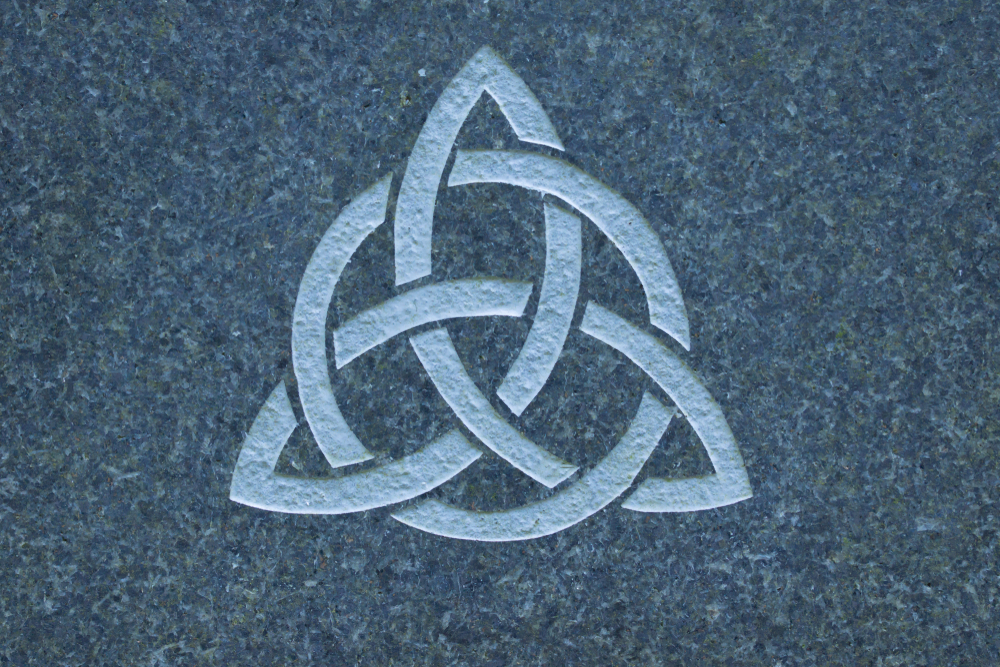
What does Mjolnir symbolize?
Mjolnir is most commonly depicted in pictures and paintings or as a pendant or amulet. Mjolnir, the thunder weapon of the god Thor, is often regarded as a symbol of strength and power.
Aside from that, it’s also a symbol of agriculture and fertility, as Thor was the patron saint of farmers. Mjolnir is a fertility symbol that is commonly used in wedding ceremonies.
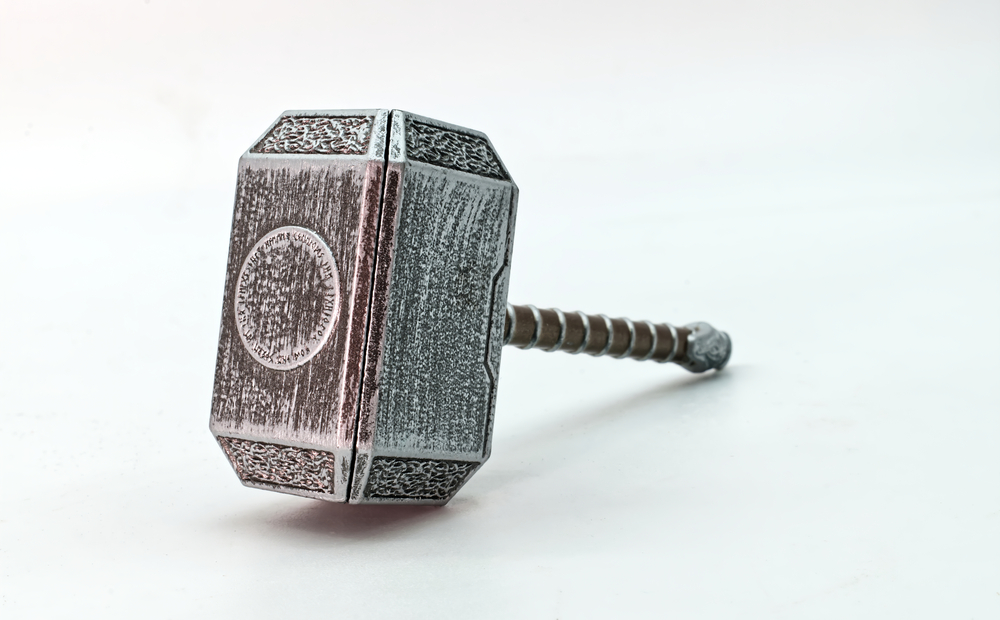
What does a Mjolnir tattoo mean?
Mjolnir is associated with strength, protection, and ability. A tattoo of Mjolnir might be seen as a symbol of these qualities or as a tribute to Norse mythology. It could also be a personal symbol for the person who has the tattoo, representing their inner strength or the values that are important to them.
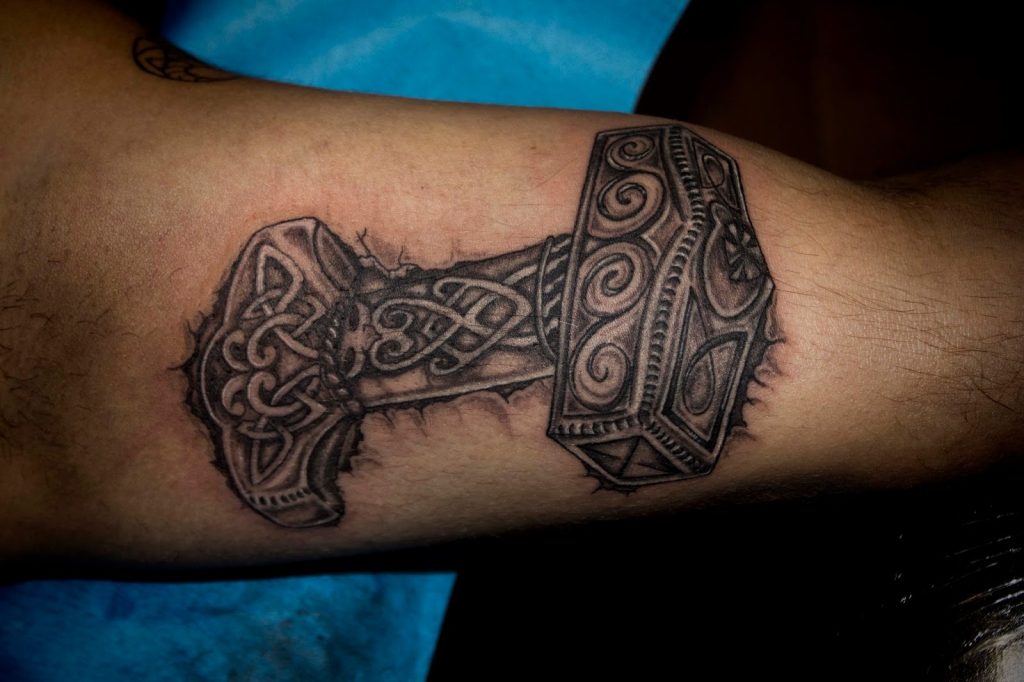
Modern-Day Use Of Mjolnir Symbol
Like numerous old Norse symbols, people use the Mjolnir symbol to represent strength and their ancient Norse heritage by some Neo-Nazi groups. Mjolnir was even designated as a “hate symbol” by the Anti-Defamation League.
However, Mjolnir has been removed from that list, as it has numerous other applications. Many Germanic Heathens revere the symbol, often carved into little pendants and amulets.
In 2013, the “Hammer of Thor” was also added to the list of US Department of Veterans Affairs emblems for headstones and markers.
Thor’s hammer has also appeared in modern pop culture via Marvel comics and the latter Marven Cinematic Universe, where the comic book Thor wielded the one-handed thunder hammer.
The Mjolnir is also a popular pendant, jewelry, and fashion symbol. Like many Norse symbols, this has a masculine feel, but men and women wear it as a symbol of power, strength, and bravery.
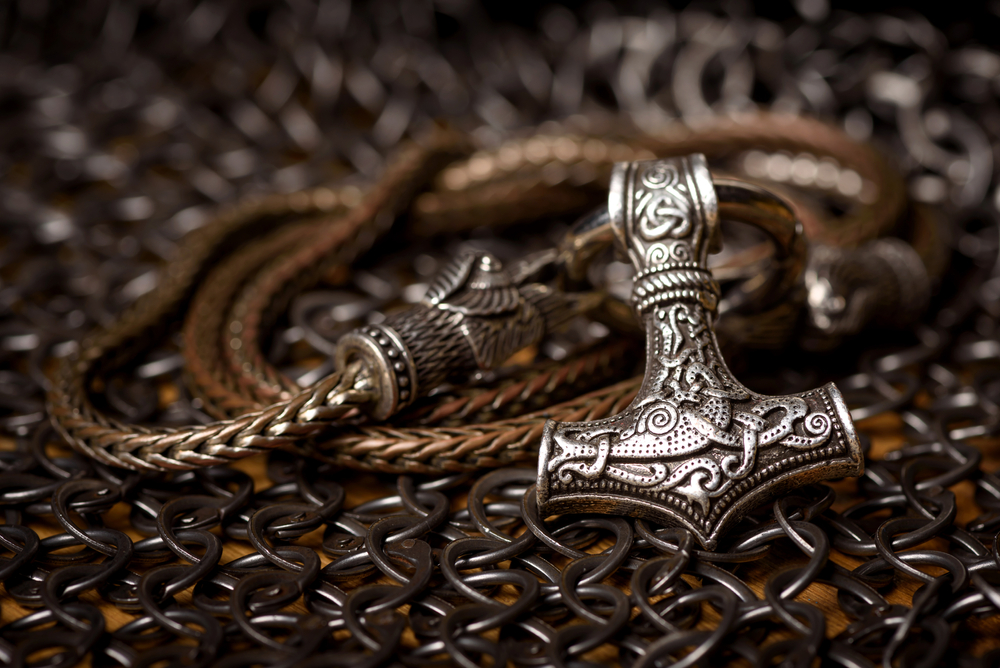
For more on Norse symbols, check out this article on Norse protection sigils.
